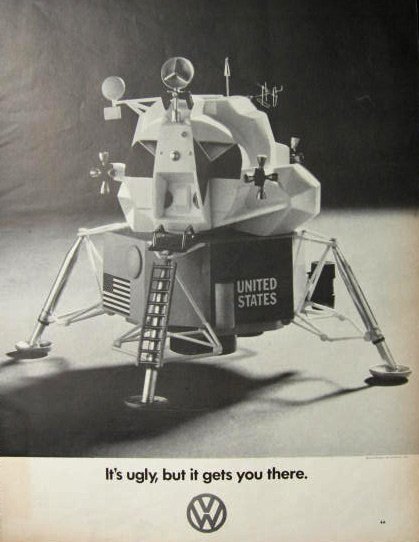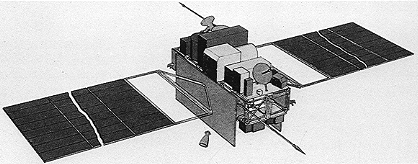....The resulting hybrid spaceship was rather ungainly, yet it would deliver 1 ton of survival gear to the stranded astronauts....
I thought the Ariane 4, launching from Kourou, could deliver considerably more than a tonne to Columbia's orbit.
According to
this table at Wikipedia various versions can get somewhere between 6 to 7 tonnes to "Low Earth Orbit;" using the
Silverbird Launch Calculator and assuming we are talking about an Ariane AR44P w/H10 upper stage & medium fairing (that's 4 boosters from the picture, I assume solids because that is more pessimistic and seems most likely to have been what was available, and I guessed the standard H10 upper stage, and "medium" fairing is called "long" as opposed to extra long in the Ariane 4 dropdown) the calculator gives
Estimated Payload: 6437 kg
95% Confidence Interval: 5706 - 7250 kg
for a 307 km altitude circular orbit at 39 degrees inclination--assuming launch from Kourou of course.
Now the "payload" is everything--the Eureca bus and its fuel included.
does all that really mass nearly 5 tonnes or more?
I'd think we'd be delivering considerably more than a tonne.
I tried to look up information about the Orbiter life support system, notably the mass of an LiOH canister and the number of person-days such a canister is good for, but have had little luck so far. I've gathered that the Orbiter used two canisters at any given time, with them "
...changed alternately every 12 hours through an access door in the floor. For a flight crew of seven, the lithium hydroxide canisters are changed alternately every 11 hours...." but it isn't clear to me whether one canister lasts 12 (or 11) hours and there are four changes in 24 (or 22) hours, or whether "alternately" also implies that the total lifetime of one canister is 24/22 hours.
Either way I have no clue what the mass of a canister is. Clearly at least two, and possibly four, are needed for every day we hope to extend the lifetimes of Columbia crew in orbit. And of course LiOH canisters are just the most critical supply item--given an unlimited supply of them, other shortages would soon become urgent. Oxygen, food, power (that's by hydrogen/oxygen fuel cells, which provide water as well)--other items are also running out. There's no point in providing plenty of LiOH canisters for another month if the oxygen is going to run out sooner, or the power will fail long before then.
The ultimate limit is, when will they run out of something they can't refill in orbit; I'm guessing there's no provision allowing them to top off the tanks of liquid hydrogen and oxygen supplying the fuel cells.
Is it then that the Eureca will not only carry supplies, but docked in the by but with solar panels extended, supply power to the Orbiter as well, so that the hydrogen and oxygen in the fuel cell tanks can be considered mainly to be life support supplies and not the sole power source? That would explain why the mass of actual supplies is so low!
Anyway as I say I don't know if a single standard LiOH canister masses a kilogram, ten kilograms or a hundred--I doubt both the first and the last as far too low and far too high, but even 10 kg, which means a tonne of them could extend their stay (as far as CO2 scrubbing goes) by a month or two, is probably too optimistic.
A single tonne of nothing but LiOH canisters could buy them a week or three then I guess. I don't know when they run out of oxygen to breathe though.
It seems obvious to me that if the Ariane can launch the Eureca, and the Eureca can carry more than 1 tonne of supplies to Columbia, it should. I don't think that using it as a power generator can work well enough--but without some supplemental power source, the oxygen will run out on schedule. Unless Eureca's solar panels generate essentially as much power as the orbiter fuel cells (this seems highly unlikely to me) it probably isn't worth sacrificing any consumables whatsoever.
Especially if there can be some way to send more oxygen and hydrogen, and use that in the fuel cells. Being without power would kill them too.
I wonder how much e of pi or truth is life know about things like the canister masses, and just how much margin beyond 30 days was in the fuel cells and extra oxygen for breathing.
As long as the fuel cells last, there's plenty of water--3 gallons per crew member per day. And that tells us the mass of reactants used to generate the power--about 80 kg a day. So in 30 days they'd use at least 2 and a half tonnes--maybe more since this is at the low power rate adopted for the emergency, they probably were drawing a lot more power before the emergency powerdown.
At that rate, Atlantis had better not be much delayed past the 15th, even if Eureca actually delivers more than a tonne of stuff. There's no point in Eureca bringing more hydrogen unless it can be fed into the fuel cells, or they send up an auxiliary fuel cell that can be plugged in to the power bus--but that would cost more mass. There might be a point in bringing oxygen, if breathing oxygen is their next limit, but I suspect the fuel cells consume oxygen at a considerably greater rate than the 7 humans aboard do. Food won't be a problem for a while, and if it runs out--humans can operate without food for weeks, if they have water.
This is why I was looking on the chart for really heavy launchers, like the big Titan or Atlas options, that might deliver 20 tonnes or more. But they aren't options, we have to make the best we can of the Ariane.
If, God forbid, but as seems all too likely He won't, Atlantis is delayed.
And on time or late, Atlantis should be loaded to the gunwales with all the extra canisters, oxygen and hydrogen for fuel cells (and some kind of extension cord to power Columbia emergency systems!) and possibly food too, in case Atlantis is also stranded. They can eject it after reentry burn (or if possible, before) if all goes well. The more they have, the more time that buys not only for Endeavour but also for putting together a big Titan or the like with serious quantities of extended rations.


